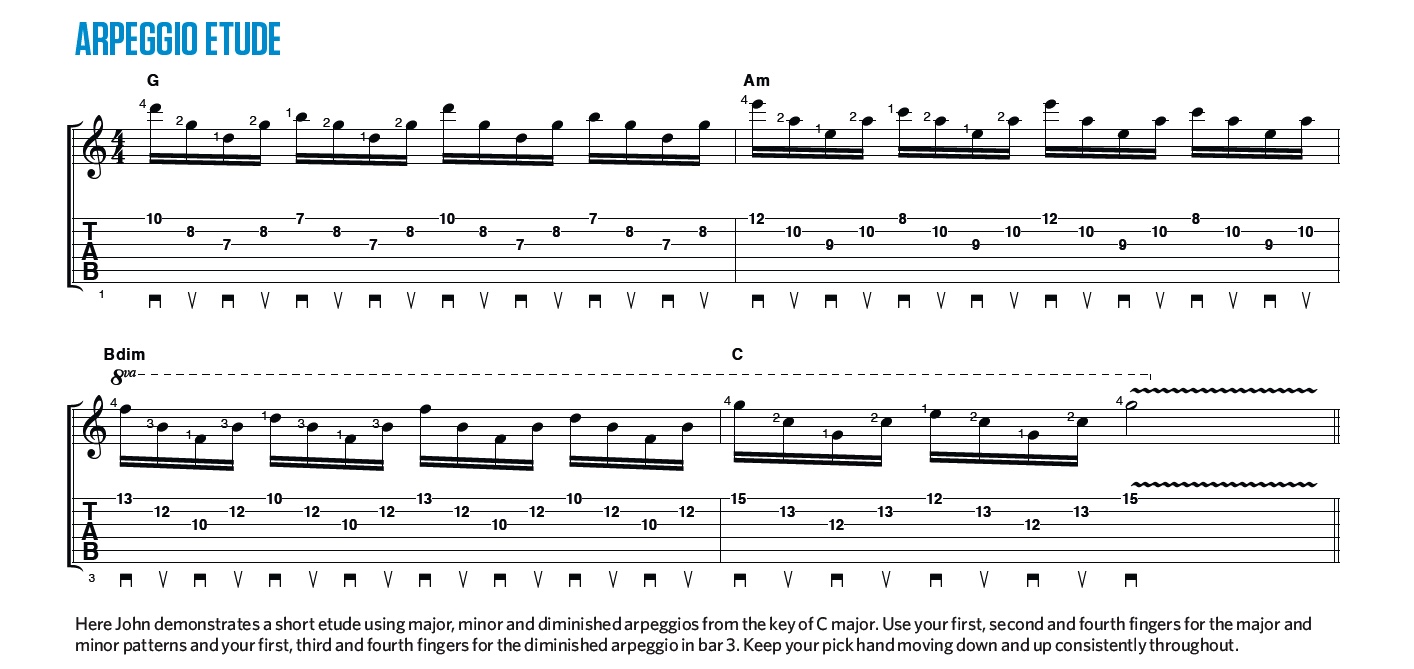Classic guest lesson: John Petrucci's ultimate guitar warm-ups
Flex those fretting fingers and prime your picking power with the ultimate warm-up routine with Dream Theater's iconic guitarist

Legato warm-up
I do things in a very methodical way,” states John when introducing this fret hand warm-up. “The purpose of this exercise is to get the blood flowing.” By this, John means that you should begin your warm-up by just loosening up with some short scale fragments, which we’ve tabbed here.
No metronome and no pressure, at least to begin with. With a very basic warm-up under your belt you can move on to John’s various fingering exercises that ensure no muscle group is left out. Remember, these patterns don’t necessarily fit within a particular scale and are not meant to sound musical, but it is important that each note sounds crips, clean and clear.
The next stage in Petrucci’s legato warm-up is what he calls “finger combinations”. These fret box diagrams show each combination. The first two patterns cover four frets and John uses fingers 1, 3, 4 and 1, 2, 4 respectively. “Then I’ll do a stretch,” continues John, as shown in the second two diagrams.
This time the patterns cover five frets and John uses fingers 1, 2, 4, followed by 1, 3, 4. Simply play through each combination from low to high, like a scale. Pick the first note on each string followed by hammer-ons for the rest of the notes.
One note per string picking warm-up
"Definitely an important aspect of my playing is keeping my hands in sync,” says John, which means it’s time to turn your attention to your picking hand. John’s approach to picking practice is, once again, extremely methodical: “I’ll start with one-note per-string exercises, then two-note per-string, then three, then four.”
Here we’re focussing on the one-note per-string idea, which is an approach ideally suited for arpeggios, but rather than sweep picking John prefers to alternate-pick in order to articulate every note and, as John explains, “it takes care of inside and outside the string picking”.
John's hit and miss philosophy
John has a clever way of building speed – he calls it his “hit and miss philosophy”. The idea is that you play faster than you are really capable, and, rather than thinking about hitting each individual note, you think about generally keeping your hands in sync. As John says: “I wouldn’t recommend you do it all the time, but it’s a useful tool and you can gain a lot of speed from it.”
Want all the hottest music and gear news, reviews, deals, features and more, direct to your inbox? Sign up here.
Try applying John’s ‘hit and miss’ method to his arpeggio exercises. After you’ve done five minutes of controlled practice with a metronome, finish off by blasting through the pieces at high speed. Even though at first you’ll probably miss more notes than you hit, the point is to let your hands experience the ‘feeling’ of moving fast. At some point your hands will hopefully synchronise.





